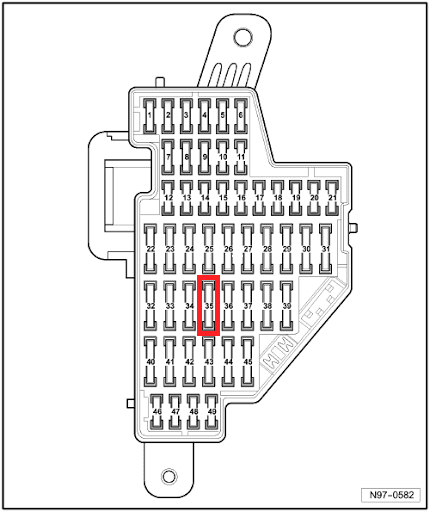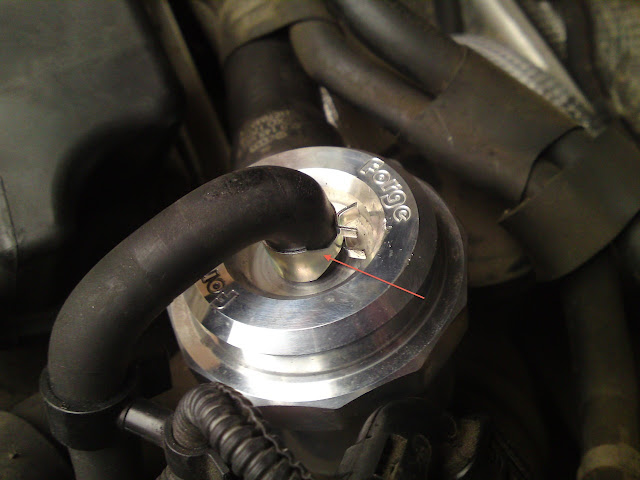The Passat B6 Headlight Washer System.
1 - The Problem
A friend recently picked up a 2007 B6 Variant at a knockdown price due to a few issues, some disclosed by the seller and some not. It came with factory bi-xenons - nice - but we discovered the washer system, required by law for higher-powered xenon-equipped cars in the UK, wasn't working.
2 - The Diagnosis
First thing to check on any xenon-equipped car is whether it actually has a headlight washer system fitted, cars fitted with 20W xenons aren't required to have headlight washers but those with 30W xenons - like this B6 - are. If in doubt look at your washer bottle, if it has a hose that's considerably larger than a regular washer hose line then it's a high-pressure line designed to first pressurise and open up the rams that the jets are fitted to. I've seen numerous forum threads where owners presumed washers were fitted and proceeded to "enable" them using VCDS, only to be confronted with an error code and of course non-functional headlight washers. Just like the idea of "downloading extra memory" for your computer, enabling a feature in VCDS doesn't automatically make non-existent hardware suddenly appear.
Once you're sure you're not trying to fix a non-existent problem it's time to proceed.
2.1 - Diagnostic Check
If you have access to VCDS or other diagnostics now is a good time to run them. This was the output from our test:
00924 - Relay for Headlamp Cleaning System (J39)
009 - Open or Short to Ground - Intermittent
Freeze Frame:
Fault Status: 00101001
Fault Priority: 4
Fault Frequency: 2
Reset counter: 88
Mileage: 346164 km
Time Indication: 0
Date: 2020.08.10
Time: 18:47:00
Freeze Frame:
OFF
Voltage: 12.00 V
OFF
ON
OFF
OFF
OFF
This essentially tells us what we already know - that there's a fault. The "open or short to ground" isn't very helpful in this case, other than identifying an electrical issue. The only realistic non-electrical failure would be a water leak preventing the required pressure to build for the washer to activate, and such a leak would be obvious to say the least.
Here's the relevant circuit...
Here we can see it's a simple system. SC35 is the protection fuse, J39 is the relay and V11 is the washer pump. The fuse provides the +12V supply to the relay switch and coil. The J39 coil finds its path to ground via the Central Electrics Control Module rather than being switched on the positive side and being directly grounded. Pump V11 receives its +12V from the J39 switch and is directly grounded via a return wire.
2.2 - Fuse Check
First check the condition of fuse SC35, then check there is +12V present. This is located at the driver's side interior fuse box.
Note the image shows the driver's fuse box on an LHD car, RHD is the mirror image. SC35 is the fourth fuse in counting from the front of the car on the middle row of full-size fuses. It's a big lad rated at 30 amps.
If the fuse is good and +12V is present then move on to checking the relay.
Result: Ours was good.
2.3 - Relay Check
Remove the driver's storage bin on the dashboard to expose the Central Electrics Control Module.
The righthand-most relay is the engine start relay (designated "433" in this image). The J39 relay for the washers, designated "53", is immediately next to it. Conveniently, on this Passat it both relays were exactly the same type so testing by substitution is easy. Switch both relays around and if the car still starts the relay is obviously good.
Result: Ours was good.
So the fuse provides power and the relay switches as it should, we now need to check there's power at the motor.
2.4 - Pump Check
It's up to you at this point how you tackle this. The pump is visible at the front of the washer reservoir with the indicator and fog light units removed but it comes out sideways, so removing the front bumper is the officially sanctioned way of gaining access. You can gain access by removing a couple of wheel-liner screws along with the bumper-to-wing retaining screw and this will give you just enough access to remove the pump, but it will be a squeeze especially if you have massive shovel-hands. Note there is a securing clip for the high-pressure hose on the pump and an O-ring on the high-pressure output, don't lose these and ensure they're refitted when the pump is refitted or replaced.
Release the latch on the pump's electrical connector, if you've not done this before first practice on an easily-accessible connector in the engine bay. Essentially you just need to insert a screwdriver into the tab at the rear of the connector, then apply pressure and push away from whatever the connector is attached to. It's easier once you know how it's done but remember some connectors won't have been released since the car was assembled and so may offer some initial resistance.
As standard, the headlight washers will activate once in every 4-5 windscreen wash cycles, and the headlights need to be switched on before the system operates. Bear this in mind when testing, if the lights aren't on you're never going to see +12V at the pump connector.
Testing is also far easier with an able-bodied assistant, for obvious reasons.
At this point, with the fuse and relay successfully tested, you should see +12V appear briefly every 4-5 operations of the windscreen wiper. If you don't then you need to start checking the wiring loom for severed wires, especially if the car has been involved in a collision.
Result: We got +12V!
Now test the pump for resistance. It shouldn't read zero otherwise the protection fuse SC35 should have blown. It's either going to read in the region of megohms, meaning it's burned out internally, or it's going to give a kilo-ohm range reading, suggesting the motor is in fact okay but it has a mechanical issue.
Result: We got kΩ!
Finally, briefly apply 12V directly to the pump. You shouldn't hear it spin up as otherwise it would work normally when fed 12V by the car, but you may hear it clunk as if it's trying to turn. Do NOT apply voltage continuously if you hear it clunk. It has a mechanical issue and continuous voltage is almost certain to destroy the motor if it can't turn.
Result: Ours clunked!
3 - The fix
Replacement with a new unit is the best option, but it's possible to revive the existing pump if you're lucky.
To do this, apply power directly from the car battery to the motor in brief pulses.
DO NOT DO THIS IF IF YOU DON'T UNDERSTAND THE POTENTIAL RISKS INVOLVED IN THE EVENT OF SHORT-CIRCUITING A CAR BATTERY. EXERCISE GREAT CAUTION AND TAKE YOUR TIME. DO NOT APPLY CONTINUOUS POWER TO THE PUMP.
We were lucky. After around fifteen pulses of full-fat 12V (actually 13.6V) directly from the battery, the motor's torque overcame whatever crap was inside the pump and it suddenly started to spin properly.
Result: RESULT!
It's luck-of-the-draw whether yours can be brought back to life in this situation, but if it's otherwise going in the bin you've got little to lose by trying it. After refitting the newly-revived pump the system pressurised properly once it had purged the air and the washers now retract correctly and it all works once more.






